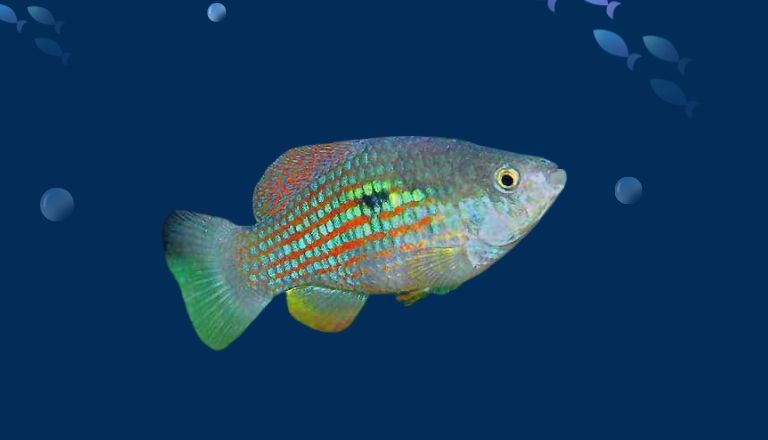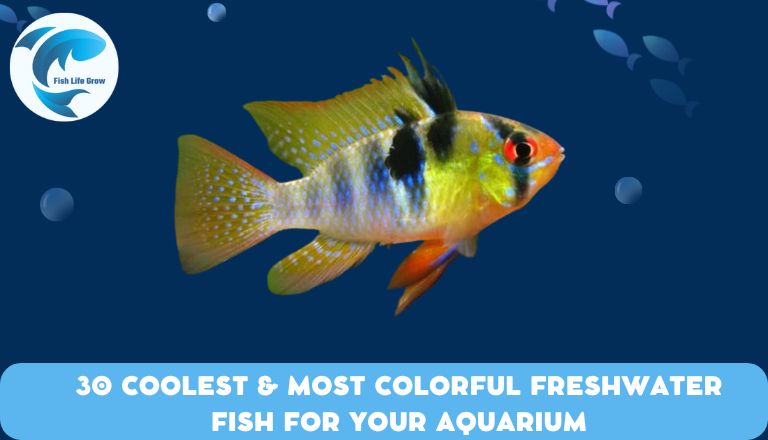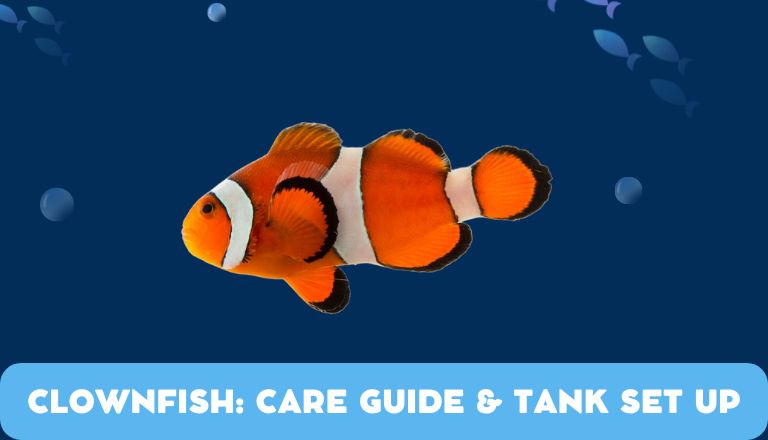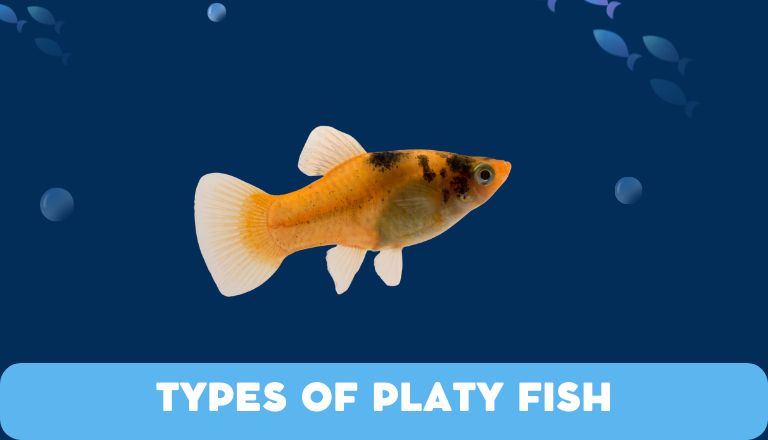Florida Flag Fish Care Guide & Species Profile
As I gazed into my aquarium, a burst of color and personality caught my eye—my Florida Flag Fish was darting about, its vibrant hues and distinctive patterns mesmerizing me. These little aquatic gems are not just beautiful; they bring an energetic flair to any tank.
In this comprehensive guide, I’ll share everything I’ve learned about Florida Flag Fish—from their unique behaviors and social dynamics to care tips. Whether you’re a seasoned aquarist or just starting, understanding these captivating fish can enhance your experience. Join me as we dive into the vibrant world of Florida Flag Fish!
Florida Flag Fish Facts & Overview
The Florida flag fish is scientifically known as Jordanella floridae. They are native to the warm waters of Florida’s freshwater systems. They typically reach the sizes of about 2 to 3 inches in length. Their bodies display a combination of vibrant greens and blues intertwined with bold stripes. It resembles the state flag they are named after. This natural beauty makes them favorites among aquarium enthusiasts.
Origin
Florida Flag Fish hails from the serene waters of Florida’s freshwater ecosystems. This vibrant fish is adaptable to various habitats, including swamps, ponds, and slow-moving rivers. The origins can be traced back to the warm and inviting waters of northern Florida, where they thrive among submerged vegetation and bask in sunlight filtered through trees.
These fish play an essential role in their environment; they are known for their algae-eating habits. By keeping algae growth in check, Florida Fish contributes to the overall health of their aquatic ecosystem.
Adult Florida Flag Fish Size & Lifespan
The adult Florida fish reaches sizes of 3 to 3.5 inches in length. Their compact size doesn’t compromise their striking appearance. The vibrant colors and unique patterns of these fish can turn any tank into a standout feature.
The Florida flag fish generally lives around 4 to 5 years in captivity when provided with proper care. Their longevity can depend upon optimal water conditions and a balanced diet.
Availability
Their availability has notably increased in physical pet stores and online marketplaces across the United States. Many local fish shops now stock them regularly due to rising demand, making them easier to find.
Online retailers have also embraced this trend, offering various options. Related websites and various specialized fish retailers allow buyers to compare prices and read reviews before purchasing.
Florida Flag Fish Behavior & Appearance
Florida flag fish are known for their vibrant colors and unique behavior. These small freshwater fish exhibit stunning patterns.

Colors, Patterns, Fins, and Sex Differences
The Florida flag fish is a small, vibrant creature that adds a splash of color to freshwater environments. Their striking coloration includes shades of emerald green and bright orange-red. Males typically exhibit more intense colors during the breeding season.
The beauty of appearance lies in their fins. The dorsal fin is elongated and adorned with intricate patterns, while the pectoral fins are transparent with hints of color that create an eye-catching contrast against the fish’s body hues.
Males display a larger size and more pronounced colors compared to females. Females tend to be more subdued in coloring with less prominent markings.
Typical Behavior
They exhibit an intriguing social disposition. In the wild, they form loose schools, promoting a sense of security as they navigate through their environment. This schooling nature is not just about safety; it also aids in feeding. It allows them to forage more effectively for algae and small invertebrates.
In a home aquarium, Florida flagfish thrive when housed together with their kind or compatible species. They establish hierarchical structures within groups. Provide ample swimming space and hiding spots in the tank to accommodate their social dynamics.
Florida Flag Fish Care & Tank Requirements
These fish prefer a tank with plenty of plant cover and open swimming space, mimicking their natural habitat in shallow waters. Aim for a tank size of at least 20 gallons. It allows them room to roam while maintaining good water quality.
Habitat and Tank Requirements
Florida Flag Fish thrive in a habitat that mirrors their natural environment. To create an ideal tank setup for these colorful fish, set up a tank of at least 20 gallons. This allows them ample swimming space and reduces stress levels. A substrate of fine gravel or sand is highly recommended, as it closely resembles the muddy bottoms.
Maintaining water conditions is key to thriving Florida Fish. Incorporate live plants to enhance the aesthetics and it also provides hiding spots. Moderate filtration will ensure clean water and prevent currents that might stress these gentle creatures. Regularly monitor and change the water partially.
Florida Flag Fish Water Parameters
These fish thrive in slightly acidic to neutral pH levels, ideally ranging from 6.5 to 7.5. Keep the water temperature between 75°F and 82°F. It makes them active and reduces stress levels.
Florida Flag Fish prefer soft to moderately hard water (3-15 dGH), mimicking their native habitats in freshwater streams and swamps of Florida. Regularly change water to keep toxins at bay and maintain good overall tank conditions.
Disease
One common ailment Florida fish may face is Ich or White Spot Disease. It manifests as small white cysts on the fish’s skin and gills. This parasite thrives in stressed environments, often triggered by poor water quality or sudden temperature changes. Maintain a stable habitat—clean water and suitable tank mates to reduce stress levels for these fish.
Fin Rot is another common disease. It is a bacterial infection that typically occurs when fish are kept in unclean conditions or suffer from physical injuries. Its symptoms include frayed fins and discoloration. Early intervention with appropriate medications can recover the fish before the condition worsens.
Florida Flag Fish Tank Mates
These vibrant fish are semi-aggressive by nature. Choose companions that can hold their own without becoming overly stressed. Ideal tank mates include robust species like the Rainbowfish or certain types of Cichlids. They share a similar habitat preference and add a lively splash of color and motion to your aquarium.
Florida Flag Fish typically thrive in planted tanks with plenty of hiding spots. Including other fast-swimming fish such as Danios can create a dynamic environment.
You can also add bottom dwellers like Corydoras Catfish or Plecos; these peaceful species help keep the substrate clean while enjoying their niche in the aquarium ecosystem.
Diet and Feeding
These colorful little fish are primarily herbivorous, favoring algae and plant matter found in their natural environments. In a well-maintained aquarium, give them high-quality flake food enriched with spirulina and other algae-based ingredients. This promotes vibrant coloration and ensures they receive the necessary nutrients for growth.
The Florida flag fish also displays omnivorous tendencies. They occasionally snack on small invertebrates or biofilm that develop in their habitat.
If you’re keeping these fish at home, supplement their meals with blanched vegetables like zucchini or spinach—offering both variety and nutrition will maintain your flag fish’s health!
How to Breed Florida Flag Fish?
Breeding Florida Flag Fish requires a dedicated setup to ensure success. Start with a 10-20 gallon breeding tank, as these fish thrive in well-planted environments. Include fine-leaved aquatic plants, such as Java moss or hornwort. It offers shelter and spawning sites. Maintain water temperatures between 75°F and 82°F (24°C – 28°C) and keep the pH around 6.5 to 7.5 for optimal breeding conditions.
Introduce a healthy pair of flag fish into the prepared tank during their breeding season. After courtship displays that involve vibrant coloration and fluttering motions near potential spawning spots, females will deposit eggs on plant surfaces or substrates. Once the eggs are fertilized by the male, they hatch within three days under ideal conditions.
After hatching, feed the fry with infusoria or finely crushed flakes until they can consume larger foods like brine shrimp nauplii as they grow—this ensures robust development of your new flag fish brood!
Conclusion
The Florida Flag Fish is a unique and vibrant addition to any freshwater aquarium. With proper care and suitable water conditions, these fish can thrive and display their beautiful colors. They are relatively hardy and can adapt well to various environments. Provide plenty of hiding spots and plants in their tank to mimic their natural habitat.
FAQs
Can Florida Flagfish be kept Alone?
Yes, Florida flagfish can be kept alone, but they thrive better in a community tank with compatible species. If you choose to keep a Florida flagfish by itself, provide a suitable environment that includes plenty of hiding spots and plants. This helps reduce stress and allows the fish to feel secure.
What is the Temperament of a Flag Fish?
The Florida Flag Fish is a small freshwater fish that is popular in aquariums. Its temperament is generally peaceful, making it a good choice for community tanks with other non-aggressive species. They can be territorial, especially during breeding season or if they feel their space is threatened.
What do Florida Flag Fish Eat?
Florida flag fish primarily eat a diet of algae and plant matter, making them herbivores. They are particularly fond of soft green algae that grow on rocks and other surfaces in their aquatic environment. They may also consume small insects and tiny crustaceans, which can provide additional nutrients.
Do Flagfish Need to be in Groups?
Yes, flagfish do benefit from being in groups. These small, colorful fish are naturally social creatures and thrive when they have companions. Keeping them in a group reduces stress and encourages more natural behaviors, such as swimming and foraging.







